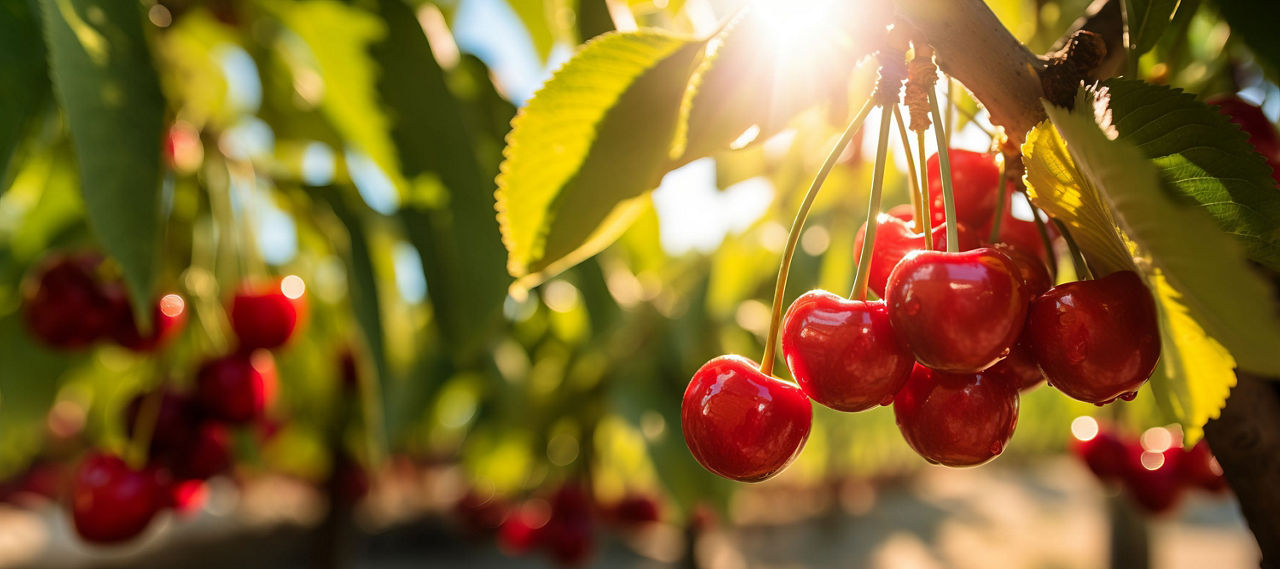July 2024
The growth in sales of organic produce continues to break records. Disagreements over some of the changes in nutrition programs in the new farm bill remain sticking points for both political parties. Extreme changes in climatic conditions continue to alarm scientists and growers around the world, but new focus on breeding techniques may be the answer in the future. This latest commentary explores the latest developments in the sector.
Food Sector
Despite inflationary pressures in the food sector, consumers continue to buy more and more organic products, which are perceived to be healthier. According to the Organic Trade Association's (OTA's) 2023 Organic Industry Survey, sales of organic products reached a record $67.6 billion, up from just shy of $40 billion a decade ago. The industry is forecasting that the trend will continue and sales will grow to more than $80 billion by the end of 2028*. Fruit and vegetables are reported to account for 15% of total organic produce sales. Bananas, avocados, apples, berries, carrots and packaged salads have been in the top sales category for organic produce.1
Trade and Legislation
The long-awaited farm bill was approved by the U.S. House Agriculture Committee at the end of May after a 33-21 vote and eight months after the bill expired in September 2023. The 10-year, $1.5-trillion bill will be sent to the Senate, where support from Democrats is minimal and has been categorized as "dead before arrival." Limits on nutrition and climate programs remain key issues. Reduction in funding of the Supplemental Nutrition Assistance Program, which is estimated at $30 billion during 10 years, has caused multiple disagreements between the two political parties. Note that the majorityof the funds for the bill (an approximately 82% projection) are allocated to nutrition programs and benefit approximately 42 million people a month. Antihunger advocates reject many of the changes in the bill. Note that a household of four people can receive a maximum monthly benefit of $973 in most states.
Several enhancements to the farm bill are as follows:
- Improved safety net programs to protect producers by enhancing crop insurance programs affected by weather-related events and providing higher support against volatilities in commodity prices (a 10-20% increase in covered commodity prices that support insurance programs such as price loss coverage and agriculture risk coverage and increases in loan rates for most loan commodities) and bolstered programs for the dairy industry. For example, soybean proposed guaranteed prices under the legislation would increase from $8.40 to $10 per bushel (+19%), and wheat's floor price would also increase, from $5.50 to $6.35 per bushel (+15%).
- Enhancements to disaster programs such as improvements to tree assistance programs, which include increasing reimbursements for the rehabilitation of damaged trees, bushes and vines as well as more flexibility to replant alternative varieties at alternative densities in alternative locations.
- Higher funding to expand tradeof and open markets for U.S. agricultural products through the Market Access Program and the Foreign Market Development program. In addition, the bill addresses trade barriers and support to enhance infrastructure deficiencies (i.e., cold chain supply).
- Expanded eligibility and benefit access by certain individuals for nutrition programs (e.g., felony drug convictions).
- Increase in funding for conservation programs and enrollment of marginal lands through state partnerships.
- Enhancement of financing and resources for new, young, beginning and veteran farmers as well as more financing options for producers unable to secure credit from commercial lenders
- New initiatives related to rural development such as rural broadband connectivity and improvements in precision agricultural practices.
- Modernization of agricultural research facilities and more funding for mechanization and automation projects involving new technologies.
- Investment in innovative wood products and expansion of the use of biochar—a carbon-rich product derived from the thermochemical conversion of organic material such as wood, agricultural residues or manure in a low-oxygen environment—which is used as a soil amendment and carbon sequestration tool.
- Higher access to energy systems for rural areas as well as more funding to grow and innovate in the biofuel and bioproduct sectors.
- Increased funding for plant pest and disease management as well as continued support for organic production programs.
- More resources to protect the livestock and poultry industries from foreign animal diseases.
Reforms related to increased transparency of data on farmland owned by foreign individuals and entities.
Furthermore, more than 50 amendments have been introduced with major changes, including (1) prohibition of the funding of solar projects with inputs from China, Iran, North Korea and Russia; (2) prohibition of purchases of poultry and seafood products from China and Russia for school lunch programs; (3) an updated definition of agricultural hemp; (4) more control and more oversight of child labor in meat-processing facilities.2
The Regional Agricultural Promotion Program, launched by the U.S. Department of Agriculture (USDA) in October 2023, seeks to support U.S. exporters in building new markets, with focus on such regions South Asia, Southeast Asia, Latin America, the Caribbean and Africa. As part of the program, the USDA announced the allocation of $300 million to 66 U.S. organizations, with awards ranging from $120,000 to $28.5 million. The following top 10 entities are expected to receive more than 50% of the total awards: the American Soybean Association ($28.5 million), the U.S. Meat Export Federation ($21 million), Cotton Council International ($19 million), Food Export USA Northeast ($17.5 million), U.S. Grains Council ($17 million), Food Export Association of the Midwest USA ($15.5 million), U.S. Wheat Associates ($13 million), Wine Institute ($13 million), Blue Diamond Growers/Almond Board of California ($10 million) and U.S. Dairy Export Council ($10 million). Other receiving organizations include the U.S. Rice Federation, USA Poultry and Egg Export Council, American Pecan Council, California Walnut Commission, Washington Apple Commission, American Pistachio Growers, U.S. Highbush Blueberry Council, Hazelnut Marketing Board, and American Prune Board.3
The surge in fertilizer prices that has resulted from the Russia-Ukraine war coupled with the impact of logistics during the pandemic years is expected to be mitigated by various initiatives of the current administration that would allocate funds as part of the Fertilizer Product Expansion Program. The goals of the program are to expand the processing of fertilizer and nutrients by means of grants to eligible applicants and to increase competition and to reduce American growers' key input costs. The USDA has reported awards of nearly $251 million involving 57 projects in 29 states year to date. A new commitment of $83 million was announced at the end of May to support various projects in California, Florida, Hawaii, Illinois, Iowa, Kansas, Kentucky, Minnesota, North Carolina, North Dakota, Oregon and Washington.
Weather Conditions
Meteorologists at the National Weather Service are forecasting a transition of the El Niño to a La Niña phenomenon from June to September 2024. Whereas El Niño, a natural climate cycle that began in June 2023, boosted air and sea temperatures very rapidly and to record levels in 2023, temperatures in 2024 are expected to be even more extreme, according to the European agency known as Copernicus Climate Change Service. The higher temperatures are alarming climate scientists and could affect various agricultural producers in areas across the United States and throughout the world. In the United States, the abrupt changes in weather conditions have brought severer weather such as tornadoes in the central region, high levels of precipitation in parts of southern states like Texas and very dry conditions in areas in the Southeast.
The 2024 hurricane season is expected to be very active, with an estimated 17 to 25 storms, 8 to 13 hurricanes and 4 to 7 major hurricanes, according to the National Oceanic and Atmospheric Administration (NOAA). Citrus growers that have battled the devastating bacterial disease known as huanglongbing, or citrus greening, are on high alert because a major hurricane can continue affecting the long-term production of citrus and grove investments in Florida.4
Solar storms have been reported to be having an impact on the GPS systems of growers that are planting crops in the Midwest. The solar storms, which can bring strong waves of magnetic fields, can disrupt electronic systems—rom power grids to communication systems, to satellites.5
Environmental Regulations
So-called pandemics in food production could become more prevalent in the future based on the evolution and transmission of new viral strains that could affect various animal sectors as well as humans. The outbreak of bird flu—an infectious viral disease that emerged in late 2020 and has infected and killed millions of chickens—is responsible for the high prices of eggs observed in 2022. Recent detection of that disease in mammals as well as a second human has prompted regulators in the United States and Europe to take steps to manufacture bird flu vaccines and potentially vaccinate farmworkers and those in close contact with infected animals.
Agricultural Technology
Various universities and privately owned companies in the agricultural sector are jumping on the artificial intelligence bandwagon. Research in this area includes AI-enabled robots that can complete several labor-intensive agricultural activities such as crop thinning, pruning during the dormant stage and harvesting. In addition, new tools are being developed to predict heat stress in orchards and vineyards.
A new push to reduce the use of synthetic pesticide components in states like California has resulted in a new platform to research new biocontrols, biopesticides and biofungicides. Some companies and organizations are beginning to invest in more research and in growing a pipeline of projects whereby growers can focus on the use of more-biological inputs compared with chemical inputs as part of new initiatives to better manage agricultural pests.
With today's rapid changes in climatic conditions that are occurring in most areas around the world, large agribusinesses like Sun World—a global breeder that licenses such varieties as seedless grapes, stone fruit, cherries and mangoes—are stepping up in the development of new breeding programs to support growing food products in coming decades and enhancing new sustainability practices for growers and the food supply chain. Many of the efforts have focused on coming to understandings of growing regions by means of predictive models to develop varieties that have disease resistance, that minimize water usage, that increase productivity and that enhance taste.
* Forecasts are not guaranteed and may not be a reliable indicator of future results.
REFERENCES
1. 2023 Organic Industry Survey | OTA.
2. House Agriculture Committee Completes Markup of 2024 Farm Bill | Insights | Holland & Knight (hklaw.com).
3. RAPP Funding Allocations - FY 2024 | USDA Foreign Agricultural Service Outlook for U.S. Agricultural Trade.
4. NOAA predicts above-normal 2024 Atlantic hurricane season | National Oceanic and Atmospheric Administration.
5. Solar storms a potentially costly risk for GPS agriculture.



